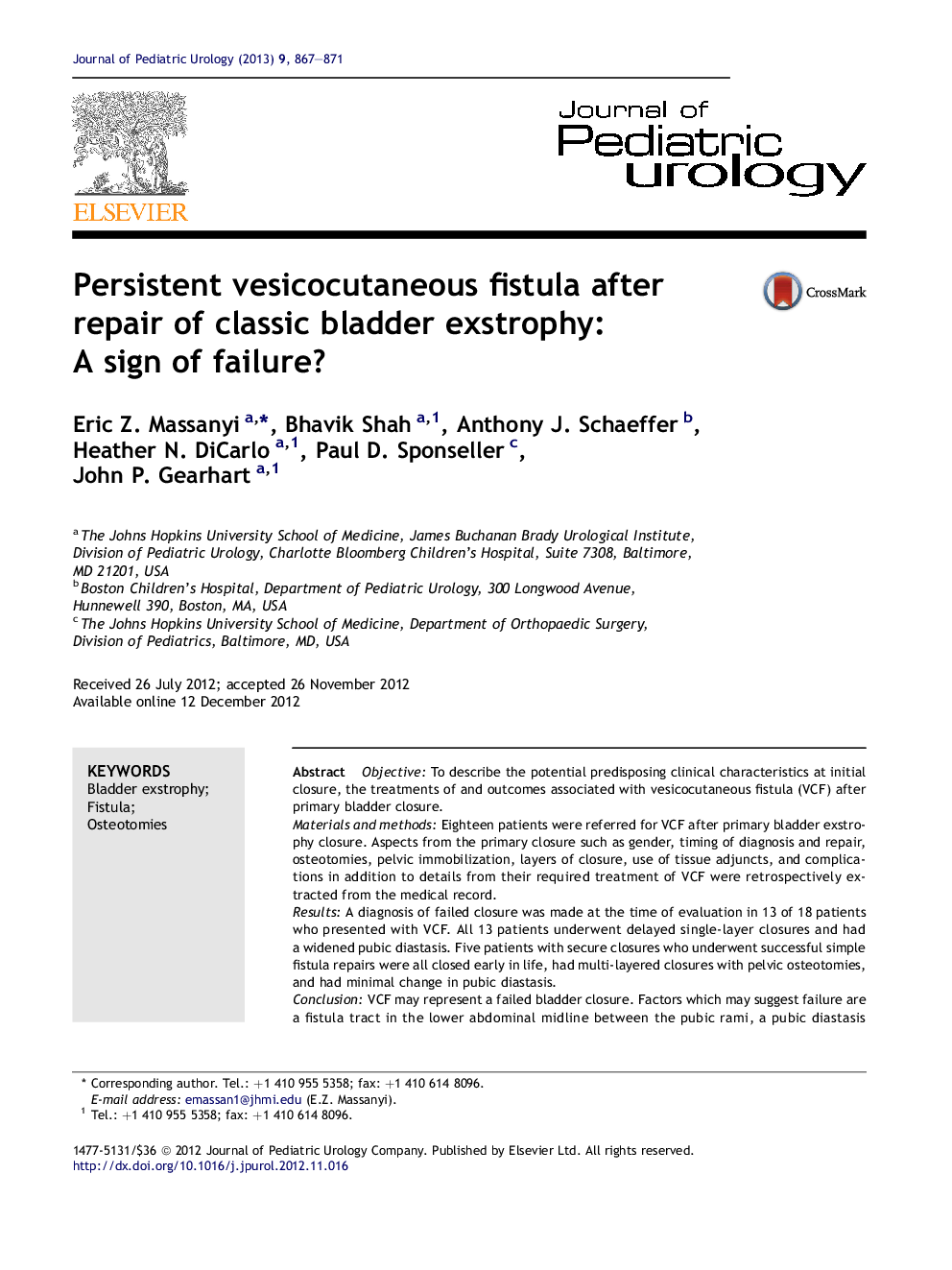| Article ID | Journal | Published Year | Pages | File Type |
|---|---|---|---|---|
| 6218554 | Journal of Pediatric Urology | 2013 | 5 Pages |
ObjectiveTo describe the potential predisposing clinical characteristics at initial closure, the treatments of and outcomes associated with vesicocutaneous fistula (VCF) after primary bladder closure.Materials and methodsEighteen patients were referred for VCF after primary bladder exstrophy closure. Aspects from the primary closure such as gender, timing of diagnosis and repair, osteotomies, pelvic immobilization, layers of closure, use of tissue adjuncts, and complications in addition to details from their required treatment of VCF were retrospectively extracted from the medical record.ResultsA diagnosis of failed closure was made at the time of evaluation in 13 of 18 patients who presented with VCF. All 13 patients underwent delayed single-layer closures and had a widened pubic diastasis. Five patients with secure closures who underwent successful simple fistula repairs were all closed early in life, had multi-layered closures with pelvic osteotomies, and had minimal change in pubic diastasis.ConclusionVCF may represent a failed bladder closure. Factors which may suggest failure are a fistula tract in the lower abdominal midline between the pubic rami, a pubic diastasis increased from pre-closure measurement, and cystoscopic evidence of an anteriorly positioned bladder.
